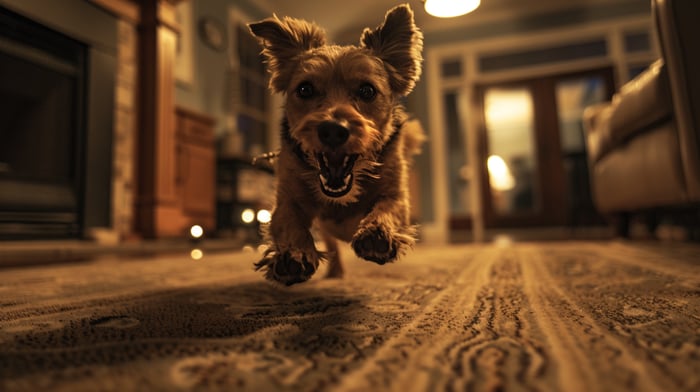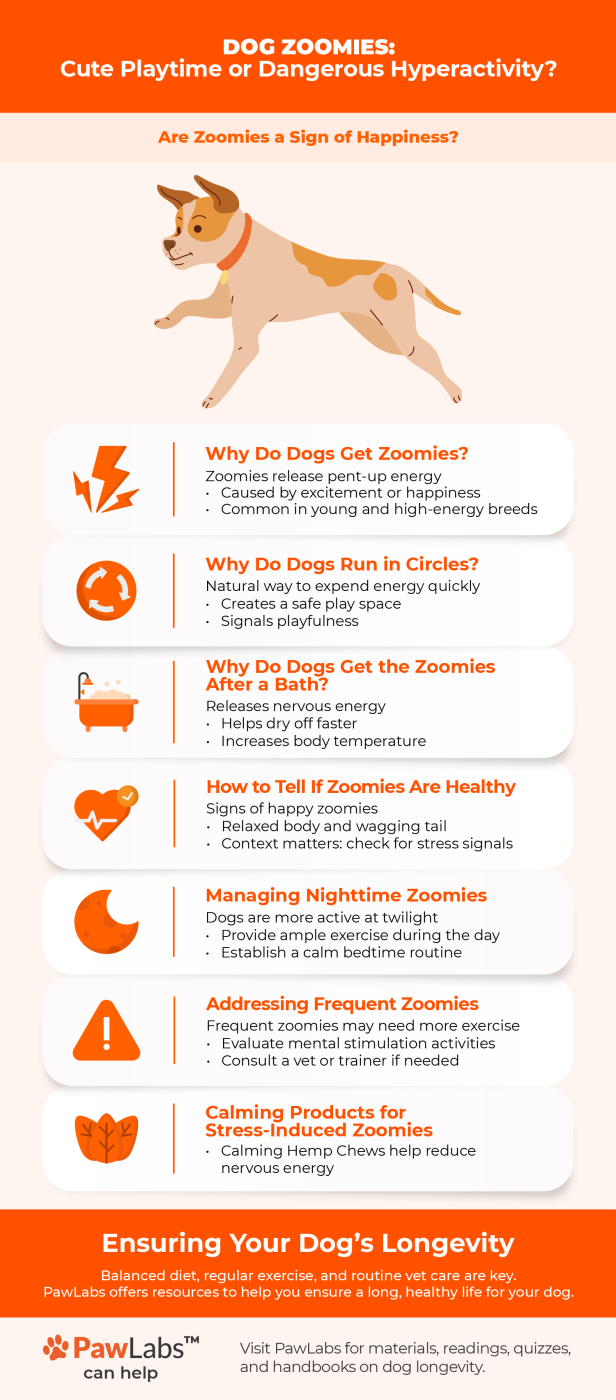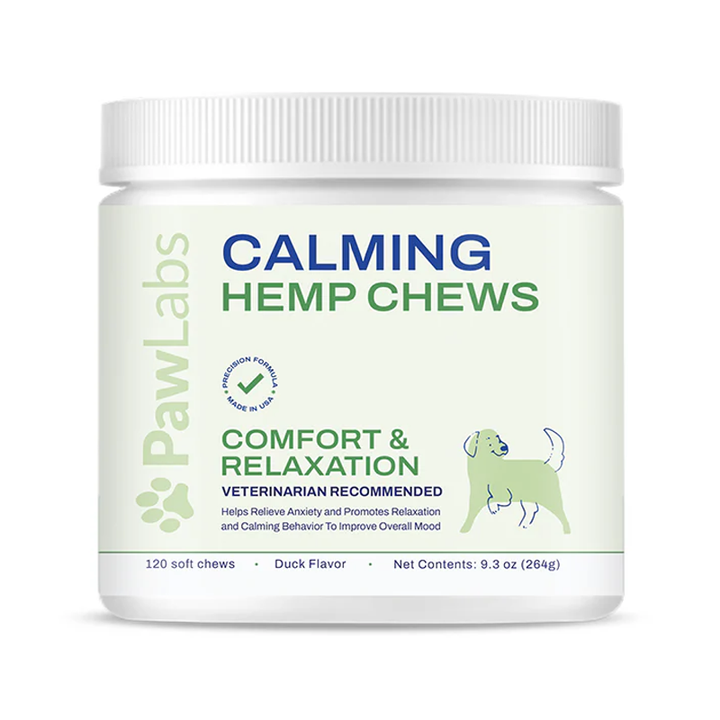Dog Zoomies: Cute Playtime or Dangerous Hyperactivity?
Are Zoomies a Sign of Happiness?

Are Zoomies a Sign of Happiness?
Dogs often exhibit sudden bursts of energy, commonly known as zoomies, which can be seen as a display of happiness. But what exactly causes these frenetic random activity periods (FRAPs)? According to experts, zoomies are a way for dogs to release pent-up energy and are often triggered by excitement or happiness. As Gary Weitzman, president and CEO of the San Diego Humane Society, explains, "Zoomies are how dogs release pent-up energy. Dogs never appear happier than when they are doing zoomies" (Great Pet Care).
However, it’s essential to distinguish between happy zoomies and those caused by stress or anxiety. Body language and context are critical indicators. If a dog is zooming with a relaxed body, wagging tail, and playful demeanor, it is likely a sign of happiness. On the other hand, if the zoomies are accompanied by signs of stress such as tucked tails, excessive panting, or avoidance behaviors, it might indicate the dog is trying to cope with anxiety (Great Pet Care) (American Kennel Club).

What Causes Zoomies in Dogs?
Several factors can lead to zoomies, ranging from a build-up of energy to a reaction to environmental stimuli. Amelia Wieber, a dog behavior consultant, notes that "zoomies happen when dogs are feeling happy and excited. It's just good fun for your pup" (Daily Paws). These energy bursts typically occur when dogs have been confined or inactive for a period and suddenly get a chance to release their energy.
Interestingly, certain breeds and younger dogs are more prone to zoomies. High-energy breeds like Border Collies and young puppies exhibit zoomies more frequently as they have more energy to burn compared to older or more sedentary dogs (Great Pet Care) (Daily Paws).
Are Zoomies a Sign of a Happy Dog or Could they Indicate Something Else?

Dog zoomies, often witnessed as sudden energetic bursts where dogs run around frantically, generally reflect joy and high spirits. While typically a happy display, zoomies can also be triggered by stress or anxiety, serving as a way for dogs to relieve pent-up tension. This behavior is quite common and, unless it presents a safety concern, usually isn't problematic. As Leigh Siegfried, CEO at Opportunity Barks Dog Training, points out, it's important to understand your dog's body language during these moments to discern whether they're feeling joyous or stressed (Rover.com).
Further insights reveal that zoomies can occur at different times, such as after a bath or during twilight hours, reflecting the dog's circadian rhythms. Recognizing the causes—like excess energy, the need for stress relief, or overstimulation—helps in managing this behavior effectively. It's also advisable to ensure a safe environment for your dog during these high-energy episodes to prevent any injuries (VetShopMax).
Why Do Dogs Run in Circles When They Experience Zoomies?
One of the most characteristic behaviors during a zoomie episode is running in circles. This circular motion is part of the dog’s natural way of expending energy quickly and efficiently. Dogs might also run in circles to create a larger, safer space to play, especially if they are indoors or in a confined area (Rover).
The repetitive and frantic nature of this behavior can also be a way for dogs to signal playfulness to other dogs or humans. It's a form of self-expression that showcases their excitement and invites others to join in the fun (Great Pet Care).
Why Do Dogs Get the Zoomies After a Bath, and Is This Normal Behavior?

Zoomies after a bath are a common sight and are usually a way for dogs to release nervous energy. Bath time can be a stressful experience for many dogs due to the unfamiliar sensations of water and being handled. After the bath, zoomies help them shake off the stress and dry themselves off faster. As Gary Weitzman points out, "Most dogs don’t love bath time, so zoomies after a bath usually mean your dog is releasing some nervous energy" (Great Pet Care).
Additionally, it can help dogs warm up if they feel a bit chilly after a bath. The sudden burst of activity increases their body temperature, making them feel more comfortable (Rover) (Daily Paws).
What Does Zoomies Meaning Tell Us About Dog Behavior?
Zoomies, or FRAPs, are a natural and healthy behavior that indicates a dog’s need to expel energy. They are generally harmless and a sign that your dog is getting enough stimulation and exercise. However, frequent and intense zoomies might suggest that your dog needs more regular exercise or mental challenges to keep them balanced (Great Pet Care) (American Kennel Club).
Pet owners need to recognize and support their dogs during these episodes by providing a safe environment where they can zoom without causing harm to themselves or others. Ensuring that your dog has enough space to run and removing potential obstacles can help prevent injuries during their energetic outbursts (Daily Paws).
How Can You Tell If Your Dog Running Around Erratically Is Zoomies or Something Else?
Distinguishing between zoomies and other erratic behaviors can be challenging. Zoomies are usually characterized by a joyful and playful demeanor, with the dog darting around in a repetitive and energetic manner. If the behavior is accompanied by signs of stress or if the dog seems disoriented, it might be indicative of a different issue, such as a medical condition or anxiety.
In such cases, observing the dog's overall behavior and context is crucial. If erratic running occurs frequently and is accompanied by symptoms like lethargy, aggression, or disinterest in activities, it’s advisable to consult a veterinarian to rule out underlying health issues (Rover).
Are Dog Zoomies at Night Different From Zoomies During the Day?
Zoomies can occur at any time, but they are often more common at night. Dogs, being crepuscular animals, are naturally more active during dawn and dusk. This innate behavior can sometimes clash with the household’s nighttime routine. As behavioral expert Rhoades explains, "Dogs are innately a crepuscular species. This means they’re most active during twilight hours, and this is when we are most likely to see zoomies, too" (Rover).
Ensuring that your dog gets ample exercise and mental stimulation throughout the day can help reduce the frequency of nighttime zoomies. Establishing a calm and consistent bedtime routine can also aid in aligning their activity levels with the household's sleep schedule (Rover).
Can Frequent Zoomies Be a Sign of Dangerous Hyperactivity in Dogs?

While zoomies are generally a normal and healthy behavior, frequent and intense episodes might indicate that your dog has excess energy that needs to be managed. Hyperactivity can sometimes be a sign of inadequate exercise, boredom, or even underlying medical conditions. If your dog exhibits hyperactive behavior regularly, it’s essential to evaluate their exercise regimen and mental stimulation activities (Great Pet Care) (American Kennel Club).
In some cases, consulting with a veterinarian or a professional dog trainer can provide insights and strategies to manage and channel your dog’s energy effectively. Ensuring a balanced routine that includes physical exercise, mental challenges, and relaxation can help mitigate hyperactive tendencies (Daily Paws).
The Importance of Dog Longevity
Ensuring your dog lives a long, healthy life involves more than just addressing their zoomies. It requires a holistic approach to their well-being, encompassing proper nutrition, regular exercise, mental stimulation, and routine veterinary care. Longevity in dogs is also influenced by genetics and environmental factors, making it essential for pet owners to be proactive in providing the best possible care.
Calming Hemp Chews

Calming Hemp Chews

$59.95
$69.90
7 Key Ingredient Formula: Hemp Seed Oil Hemp Seed Meal Chamomile Valerian Root Passion Flower Ginger Root L-Tryptophan … read more
 SUCCESS!
SUCCESS!





